Ice fishing is a thrilling winter activity that offers anglers the opportunity to catch trout even in freezing temperatures. To maximize your success on the ice, using the right lures is crucial. In this article, we will explore the best ice fishing lures for trout and provide you with valuable tips to improve your chances of landing a prized catch.
Top Ice Fishing Lures for Trout
1. Spoon Lures
Spoon lures are an excellent choice for ice-fishing trout due to their simplicity, versatility, and effectiveness. The Slender Spoon, Leech Flutter Spoon, and Time Bomb Spoon are popular options with variations in size, color, and design. When choosing a spoon lure, consider the water depth and fishing conditions. Use smaller sizes in clear water and larger sizes in murky water. For deeper water, opt for heavier spoons. Rig the spoon lure with a snap swivel and attach a fluorocarbon leader to reduce visibility. Retrieve the spoon lure slowly and erratically, allowing it to flutter and wobble through the water column. Spoon lures are effective for resting on the bottom, pounding the bottom, jigging, and free-falling. Spoon lures offer a realistic action that mimics scared game fish or injured baitfish, making them irresistible to trout.
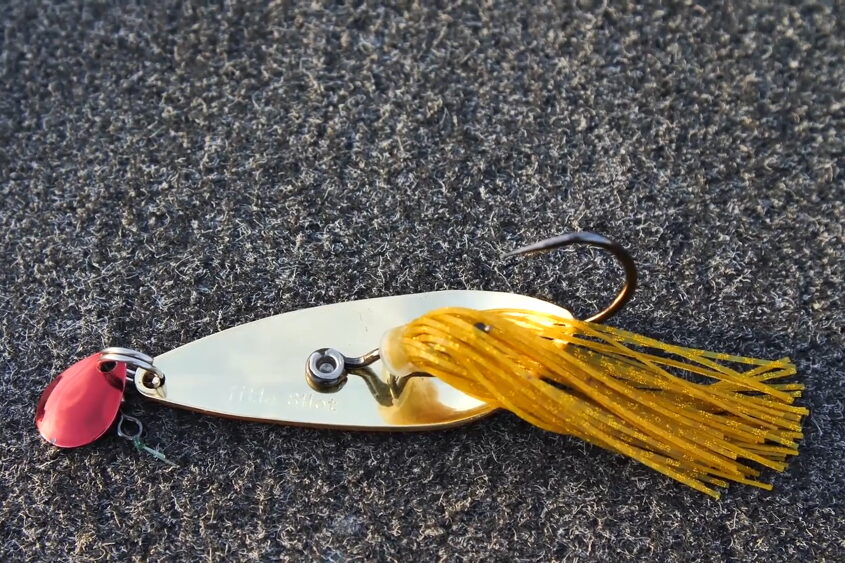
2. Jigging Rapala
The Rapala Jigging Rap is a versatile and effective ice fishing lure that can be used to catch various fish, including trout. Its unique design features flared fins on the back that create lots of movement when dropped and retrieved, mimicking an injured baitfish that trout are attracted to. Additionally, the lure has two set single hooks at the head and tail, plus a treble hook on the bottom for increased hooking potential. The Jigging Rapala comes in various sizes, with the W 7 size being ideal for targeting lake trout. The lure is available in different color options, with white or silver being an excellent choice to mimic baitfish. To use the Jigging Rapala for trout, subtle rod taps can create a rise and fall action coupled with swimming action in a circular pattern, making the lure come alive and drive trout wild. Snaps of the rod upward can cause the bait to rip vertically and slowly fall while corkscrewing until the slack is gone, which can be particularly effective when trout are aggressive.
No products found.
3. Soft Plastic Baits
Soft plastic baits are artificial lures made of flexible materials like silicone or rubber. These baits come in a variety of shapes, sizes, and colors, making them a popular choice for ice-fishing trout. Soft plastic baits are effective for trout because they can imitate the look and movement of live bait and can be infused with scents that attract fish.
Here are the top soft plastic baits for ice-fishing trout:
- Speed Shad – offers a fantastic swimming action, ribbed body, and comes with Bass Pro 8up attractant
- Sac Attack – soft plastic spawn sac imitation with infused scent and multiple color choices
- Berkley GULP! Minnow – go-to soft plastic presentation with unique scent and various size and color options
- Grubs – best bait for panfish with different color options for different water conditions
- Tube Jigs – perfect bait to imitate baitfish or crawfish with various shapes and colors
When rigging soft plastic baits for trout, it is essential to match the size and color of the bait to the conditions and the fish’s natural prey. Use a light jig head or hook for a natural presentation and a slow, steady retrieve. Experiment with different retrieval speeds and techniques to find the best for the given situation. By following these tips and using the right soft plastic bait, ice fishers can increase their chances of success on the ice.
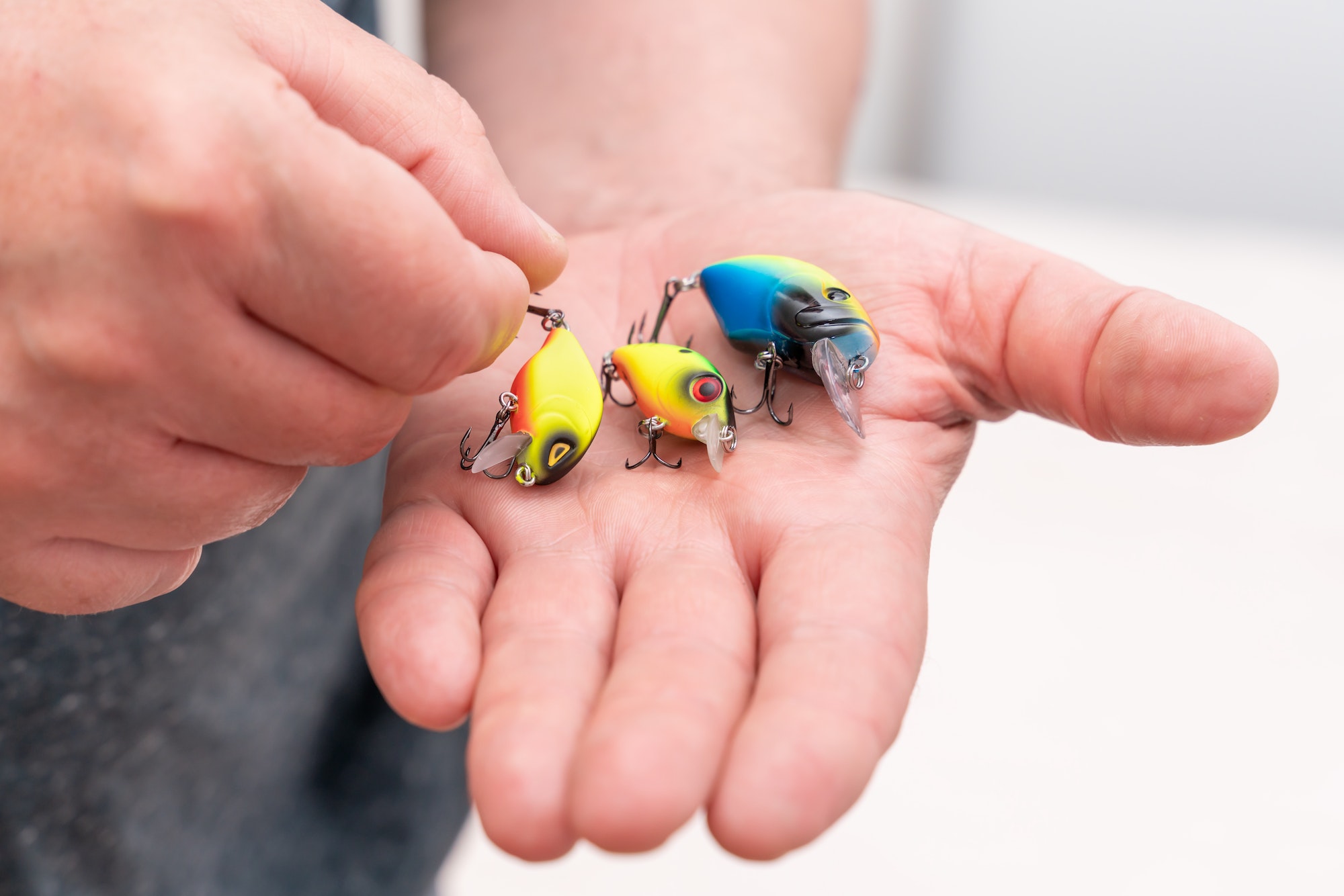
4. Inline Spinners
Inline spinners are popular for ice-fishing trout due to their design and effectiveness in cold water. These lures consist of a spinning blade attached to a wire shaft with a hook at the end. The blade creates vibrations and flashes in the water, attracting predatory fish like trout. Inline spinners come in a variety of sizes and colors, but smaller sizes are typically best for trout.
To properly use inline spinners while ice fishing for trout, it’s essential to fish them at the proper depth. Trout tend to swim closer to the bottom in colder water, so try fishing the spinner near the bottom of the water column. It’s also recommended to use inline spinners during the day when there is more light for the flash to reflect off of. Retrieving the spinner slowly and steadily can also help attract trout. Overall, inline spinners are a great addition to any ice-fishing tackle box for those looking to catch some trout.
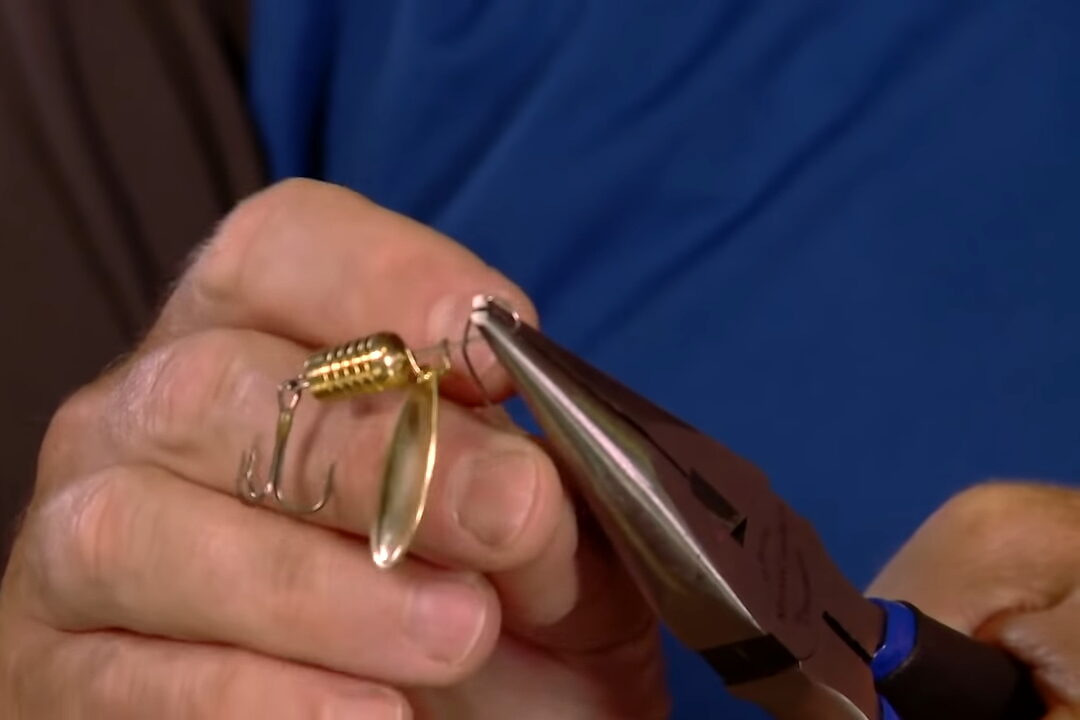
5. Live Bait Options
Live bait is an excellent option for ice fishing, especially when fish feel pressured. Live lures guarantee that fish won’t miss them for a meal. When ice fishing for trout, matching the bait to the species is crucial. The best live bait options for trout are mealworms, wax worms, spikes, and small live minnows. These can be presented on a small hook with a small split shot to get the bait down to the desired depth. Minnows are a favorite live bait among anglers fishing for trout. Small minnows on the end of a jig are an excellent technique to get a trout to strike. Dead minnows or minnow heads can also be effective in luring trout. The tried and tested maggot is also a great bait to have as they survive well in cold temperatures. It is important to use bait that is native to the waters you are fishing as trout are not keen on bait that is alien to their environment. Finally, keeping the bait alive and fresh in the cold temperatures is crucial for success.
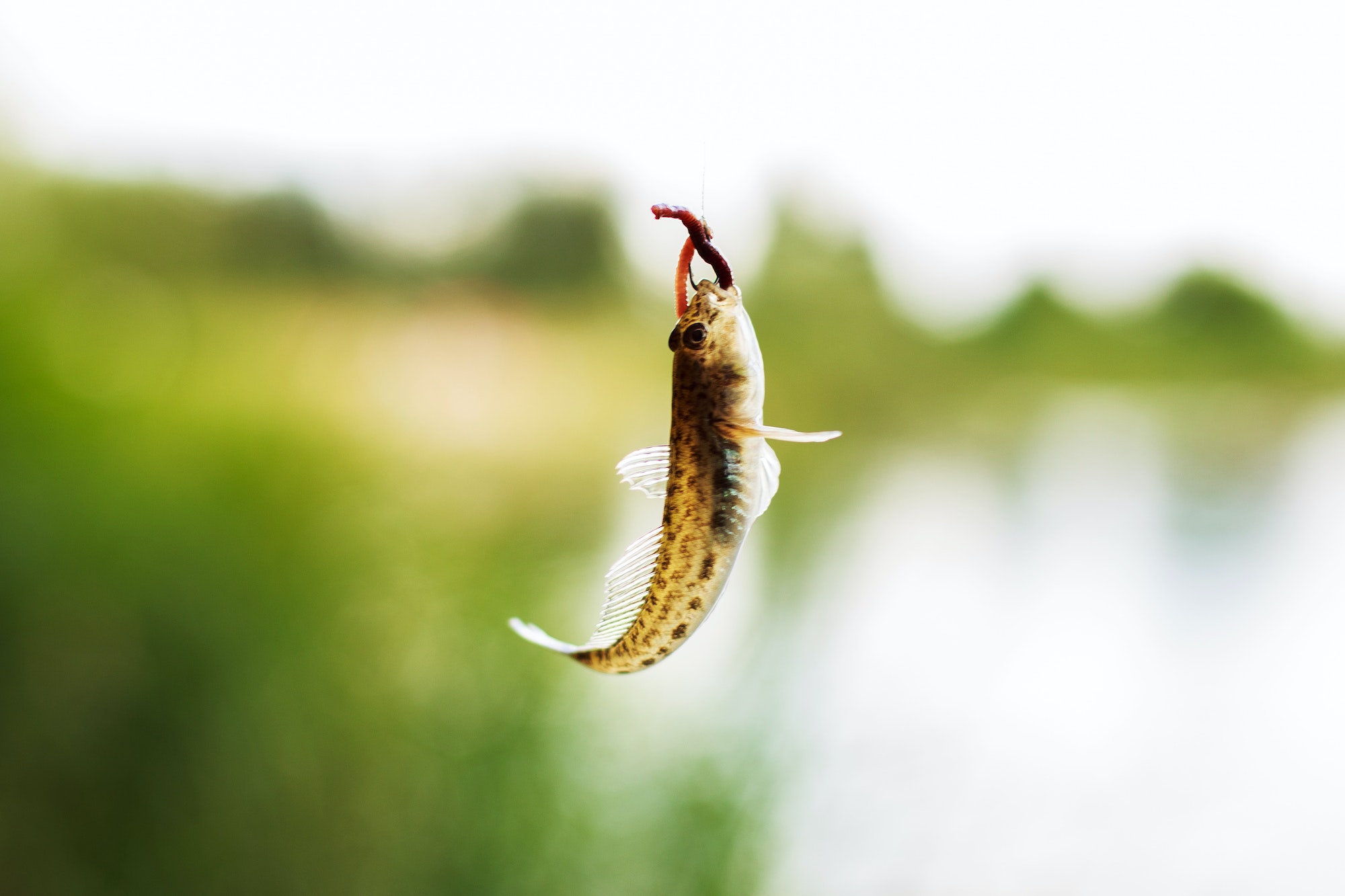
6. Tungsten jigs
Tungsten jigs have become a staple in the ice fishing community due to their unique characteristics that make them practical for catching trout. With their high density, tungsten jigs are able to punch deep, and their sensitivity allows anglers to feel every bite. For targeting trout, four or 5-mm sizes are recommended, but scaling down to 3mm is recommended for shallow water or light-biting fish. Color preferences for trout include chartreuse, pink, glow, and gold. A smooth jigging action with short movements is recommended to properly use and present tungsten jigs. When fish approach, rapidly bounce the jig in place or slowly lift it to induce a chasing strike. Adding natural bait like mealworms or nightcrawler fragments and scenting them with garlic or shrimp bait scent can also increase the chances of catching trout with tungsten jigs.
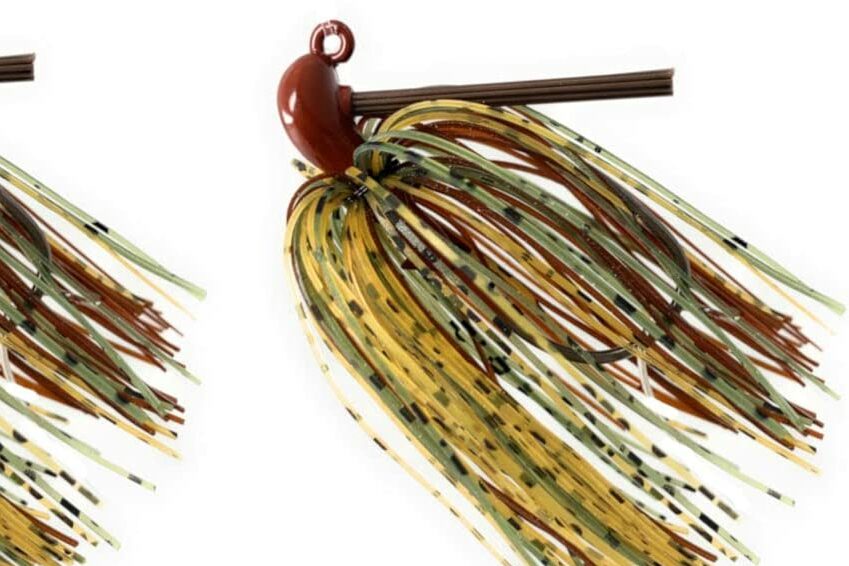
7. Tungsten Scud Flies
Tungsten Scud Flies are an overlooked but effective ice fishing lure for trout. The small, weighted fly mimics the tiny larvae, a primary food source for trout in most lakes. It is a finesse lure that is best used for tough bites under the ice. The Scud Fly can be fished like a tungsten jig but with smaller movements and twitches, with most bites happening in the fall. It is recommended to fish near the bottom and tip it with small pieces of bait. The best times to use this lure are during the winter months when trout are feeding near the bottom. It is also effective in clear water and in lakes with high fishing pressure. Use a light line weight and a small hook size for best results.
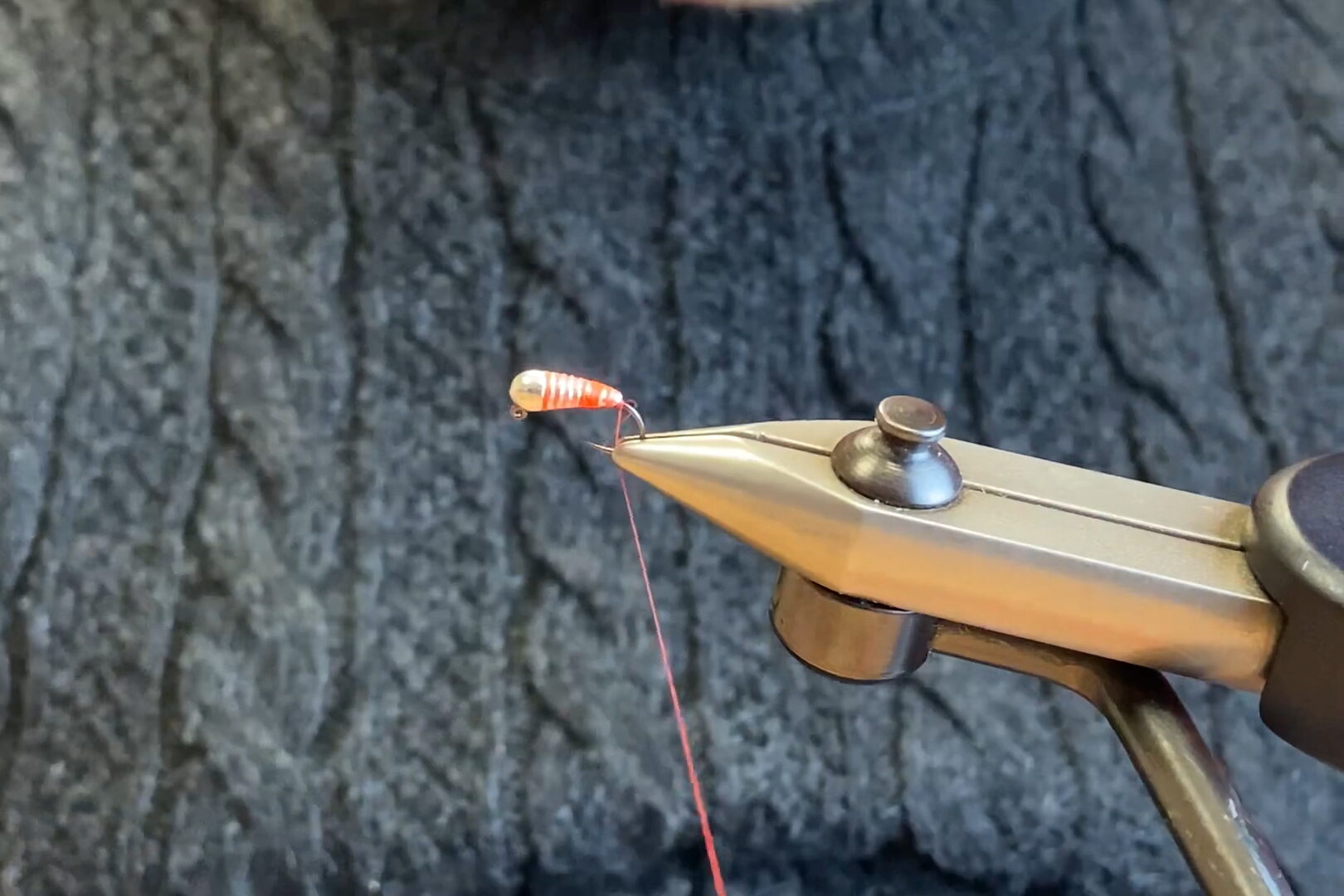
Tips for Using Ice Fishing Lures Effectively
Ice fishing for trout requires the right lures and presentation to increase your chances of success. When choosing a lure, it’s important to match it to the trout’s natural food source and take into account water and weather conditions. Experiment with different sizes and colors to find what works best. Jigs are a popular and effective lure for trout and can be tipped with natural baits like maggots or wax worms. Use a 1/16 to 1/8 oz. Size range for trout.
To find trout under the ice, set up early over shallow flats next to deep drop-offs, and intercept them as they head for feeding grounds. Lure presentation is key. Try fishing two rods next to each other, one with a tungsten fly or baited jig and the other with an attractor lure like a Kastmaster. Start shallow, as trout often feed in 2 to 6 feet of water right at the surface. Vary the depth and speed of your lure to find what the fish are biting on.
When detecting bites, look for subtle movements in the line or rod tip. Set the hook by giving a quick, sharp jerk of the rod. With these tips, you’ll be well on your way to a successful day of ice fishing for trout. Remember to always follow local regulations and safety guidelines, and have fun out on the ice!
Safety Considerations for Ice Fishing
Ice fishing for trout can be an exciting winter activity, but it is important to prioritize safety when venturing onto the ice. Here are some safety considerations to keep in mind:
- Always check the thickness of the ice before going out onto the lake or pond. At least four inches of clear, solid ice is recommended for walking, while six inches is necessary for snowmobiles or ATVs. Be aware that ice thickness can vary greatly, even within a small area.
- Wear appropriate clothing, including warm layers and waterproof gear. Hypothermia can be a serious risk when exposed to cold temperatures and wind chill.
- Bring along safety equipment such as ice picks, a life jacket, and a flotation device. These can be essential in the event of an emergency.
- Be cautious when moving around on the ice, and avoid areas with visible cracks or open water.
- Always fish with a partner, and let someone know where you will be and when you plan to return.
- Consider bringing a portable heater or shelter to stay warm and dry while on the ice.
By following these safety guidelines and being prepared for potential risks, you can enjoy a fun and safe ice fishing experience.
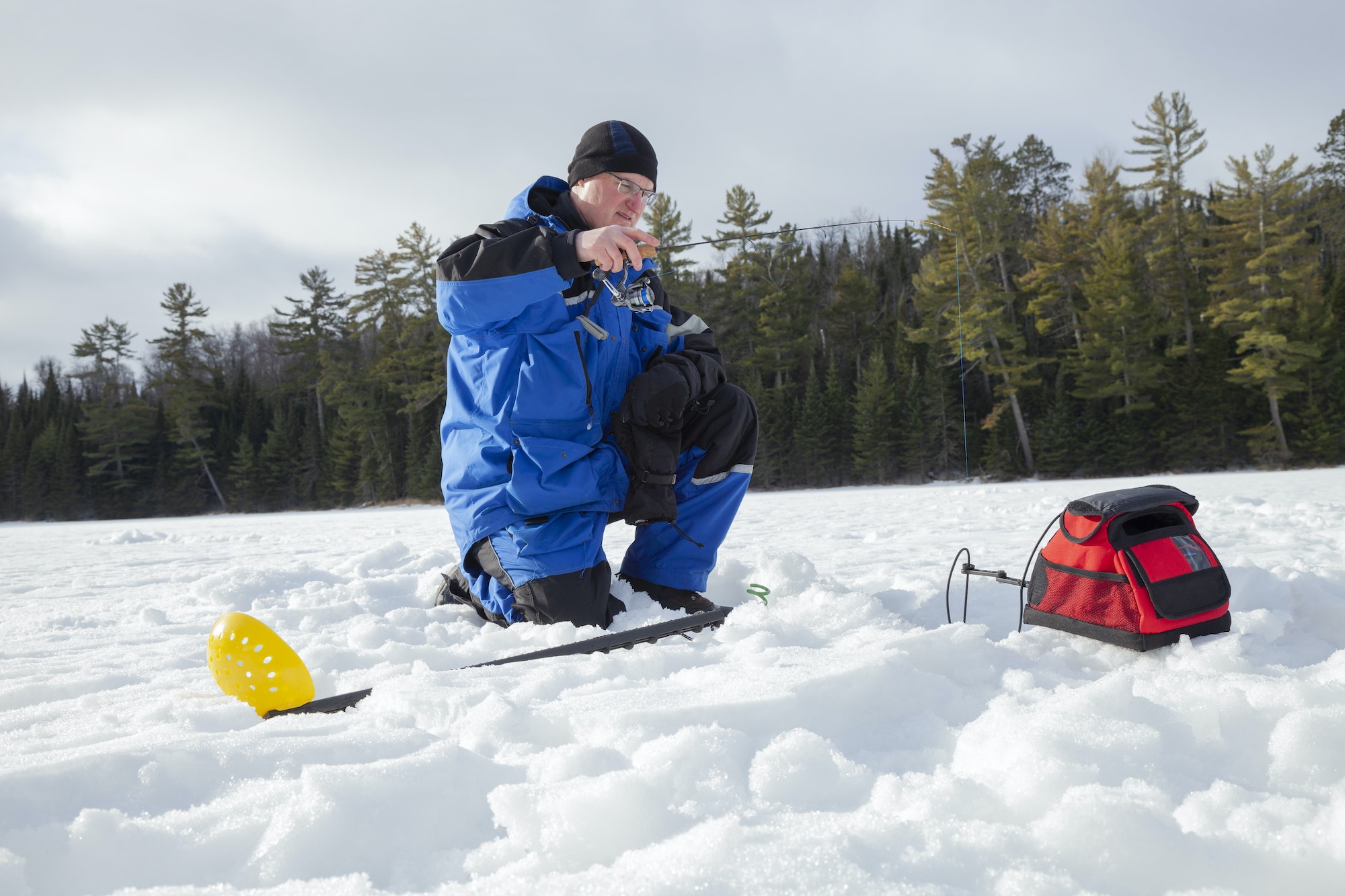
FAQs
What are the different types of trout?
Trout are a popular source of food for humans and other animals. There are six types of trout- brown, brook, cutthroat, bull, rainbow, and lake. They differ in their colors and markings. Trout are found in different types of water. Some like cold water, while others prefer warm water.
What is the best time of year to use these lures?
The best time of year to use these lures will vary depending on the type of fish you are targeting. For trout, early spring and late fall are typically the best times to use ice fishing lures. During these times of the year, trout are actively feeding and more likely to strike at the bait.
What are the different sizes and colors of these lures?
Ice fishing lures for trout come in a variety of sizes and colors. The most popular size is the 3/8 ounce, followed by the 1/2 ounce. The 3/8 ounce is available in eight colors, while the 1/2 ounce is available in six colors. The most popular color for both sizes is silver with black dots.
What is the best depth to use these lures?
It is best to use these lures at a depth that the fish are likely to be at. For rainbow trout, that is usually between 10 and 20 feet.
What are the best waters to use these lures?
There is no one-size-fits-all answer to this question, as the best waters to use ice fishing lures for trout will vary depending on several factors. However, some general tips that can help you choose the best waters to fish for trout include:
-Look for areas with deep, clear water. Trout tend to prefer these types of waters, and using lures that mimic their natural food sources can be very effective.
-Pay attention to the time of year. Different lures will work better at different times of the year, so choosing appropriate lures for the season is essential.
-Consider the type of trout you’re targeting. Different trout species prefer different types of lures, so choosing lures specifically designed for the type of trout you’re hoping to catch is vital.

